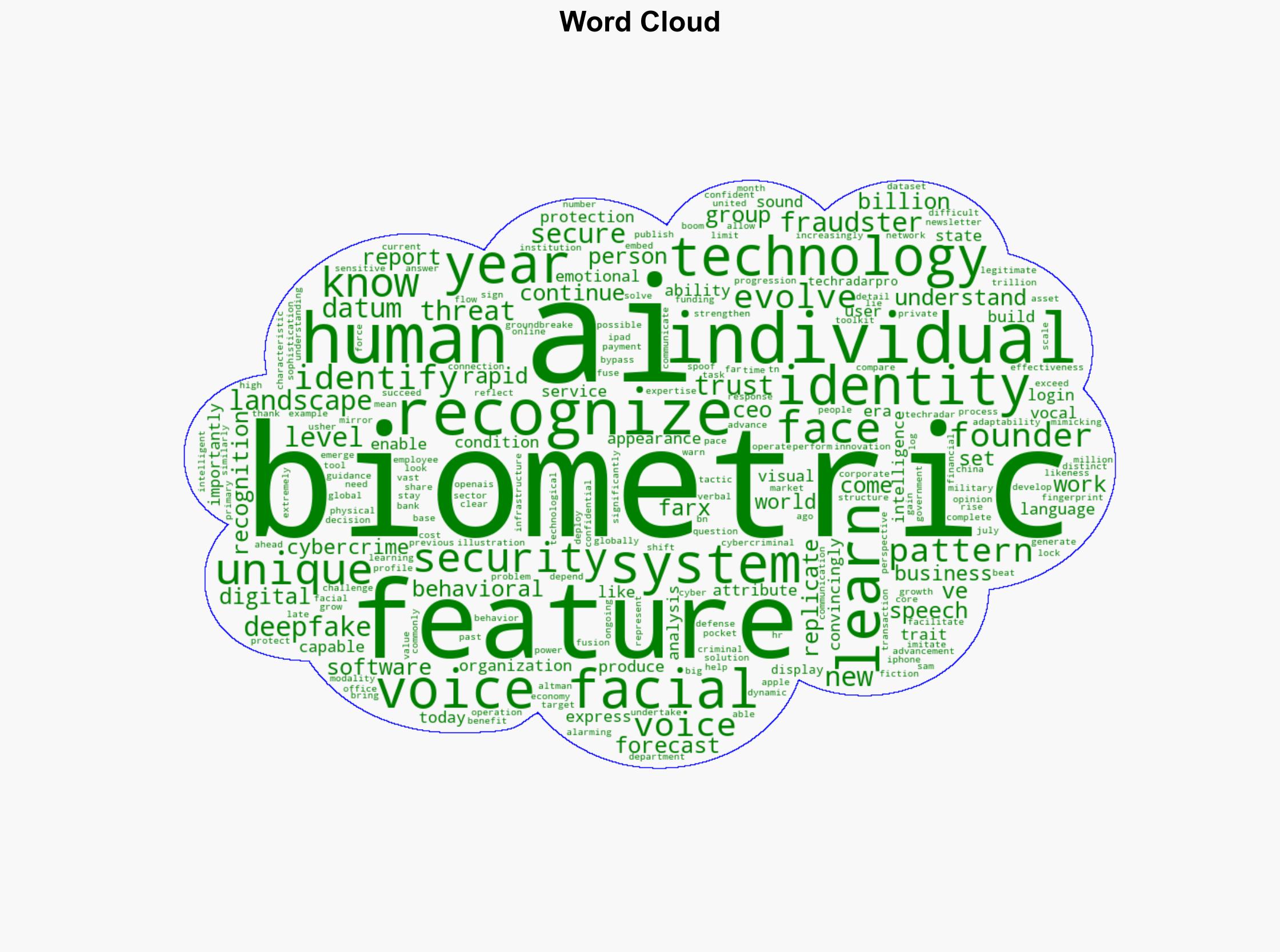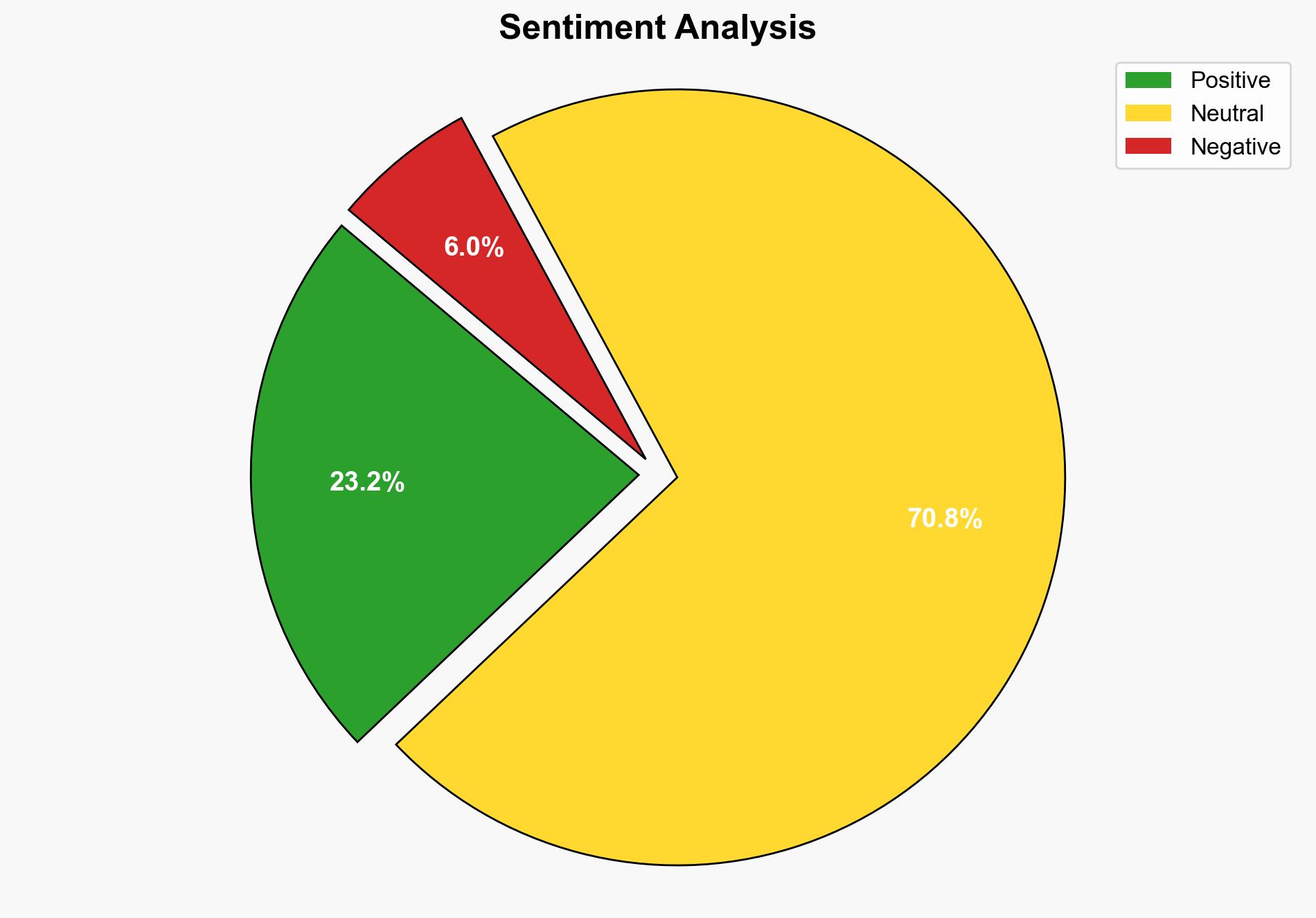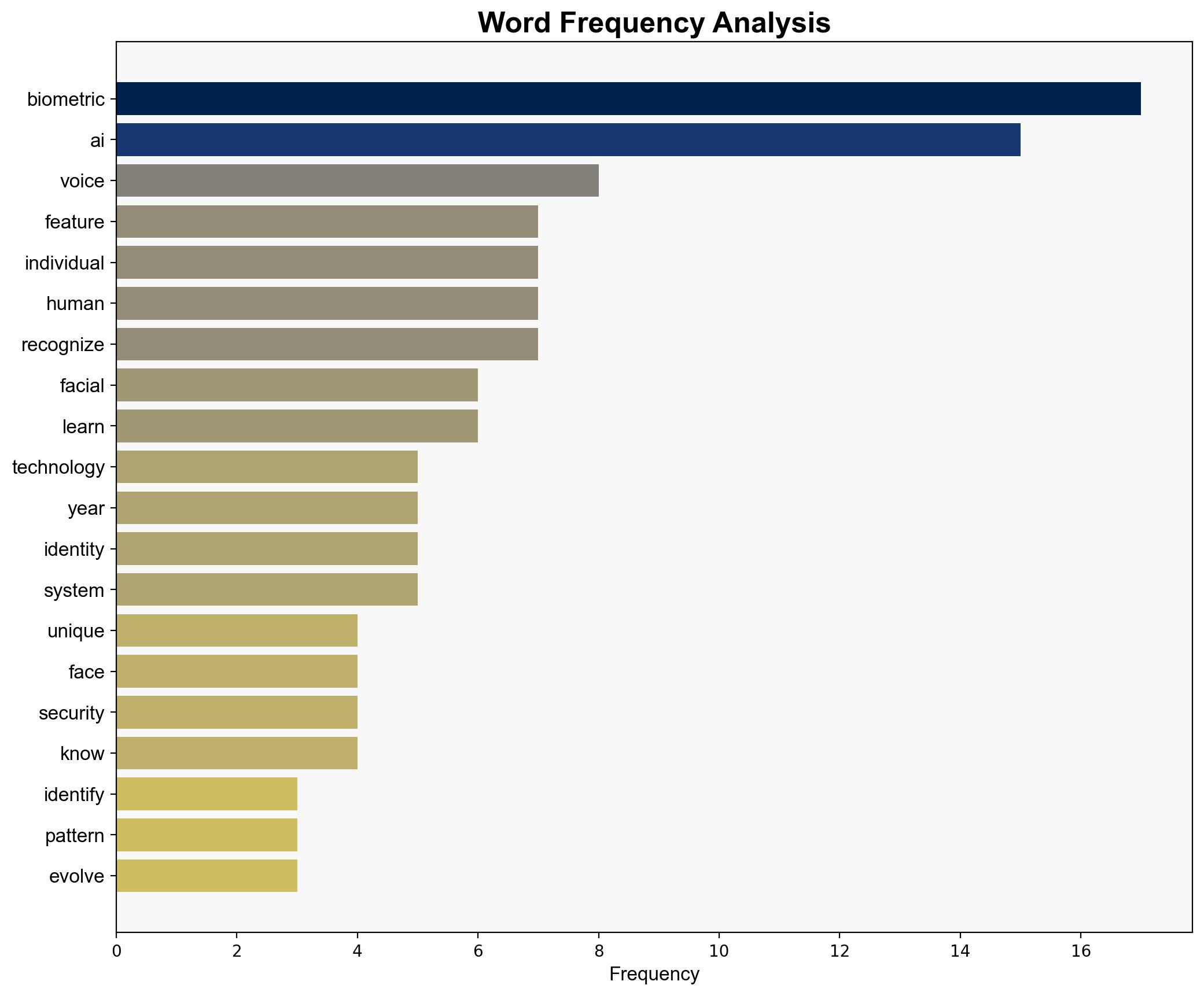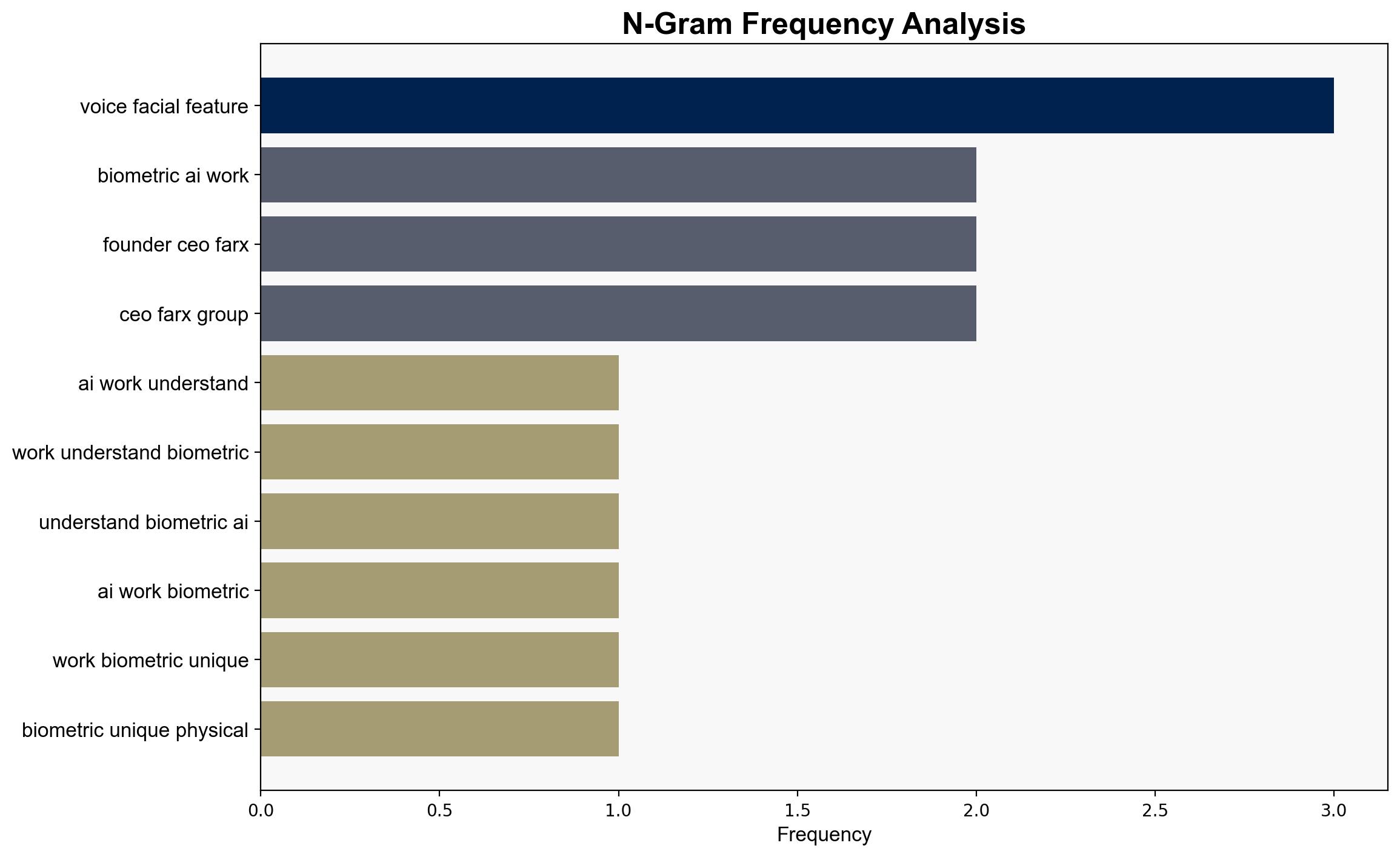What is biometric AI and how does it work – TechRadar
Published on: 2025-10-23
Intelligence Report: What is biometric AI and how does it work – TechRadar
1. BLUF (Bottom Line Up Front)
Biometric AI is advancing rapidly, providing enhanced security through unique physical and behavioral identifiers, but it also presents significant risks due to the potential for cybercriminal exploitation. The most supported hypothesis is that while biometric AI will significantly enhance security measures, it will concurrently drive sophisticated cybercrime tactics. Confidence Level: Moderate. Recommended action: Develop robust countermeasures and continuously update security protocols to address evolving threats.
2. Competing Hypotheses
1. **Hypothesis A**: Biometric AI will primarily enhance security and reduce fraud due to its ability to accurately identify individuals through unique biometric data.
2. **Hypothesis B**: The proliferation of biometric AI will lead to increased cybercrime, as criminals develop advanced methods to spoof biometric systems, such as deepfakes.
Using Analysis of Competing Hypotheses (ACH), Hypothesis B is better supported due to the documented rise in cybercrime sophistication and the potential for deepfake technology to bypass biometric systems.
3. Key Assumptions and Red Flags
– **Assumptions**: Biometric systems are assumed to be inherently secure and difficult to spoof. The effectiveness of AI in learning and adapting to new threats is presumed.
– **Red Flags**: Over-reliance on biometric AI without considering the rapid advancement of cybercriminal tactics. Lack of comprehensive data on the effectiveness of current countermeasures against deepfakes.
4. Implications and Strategic Risks
The integration of biometric AI into security systems could lead to a false sense of security, potentially increasing vulnerability to sophisticated cyberattacks. Economic impacts include potential losses from cybercrime, estimated to reach trillions annually. Geopolitically, nations may face increased pressure to regulate and secure biometric data, impacting international relations and privacy laws.
5. Recommendations and Outlook
- Invest in research and development of advanced biometric spoofing detection technologies.
- Implement continuous monitoring and updating of biometric security systems to adapt to emerging threats.
- Scenario-based projections:
- Best Case: Biometric AI significantly reduces fraud, enhancing global security.
- Worst Case: Cybercriminals exploit biometric systems, leading to widespread security breaches.
- Most Likely: A continuous arms race between security advancements and cybercriminal tactics.
6. Key Individuals and Entities
– Sam Altman, noted for his warnings about deepfake threats.
– Farx Group, involved in the development of biometric AI technologies.
7. Thematic Tags
national security threats, cybersecurity, counter-terrorism, regional focus




